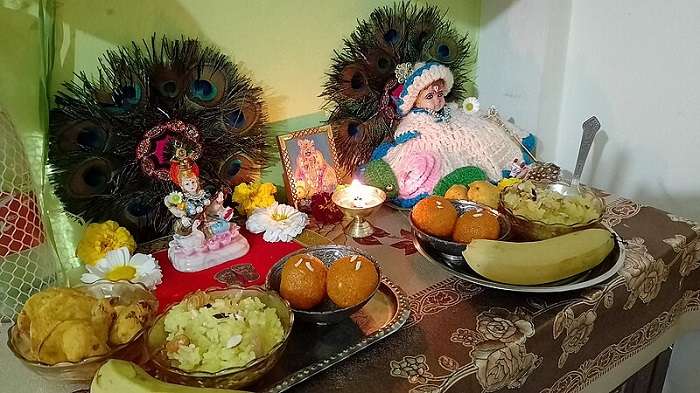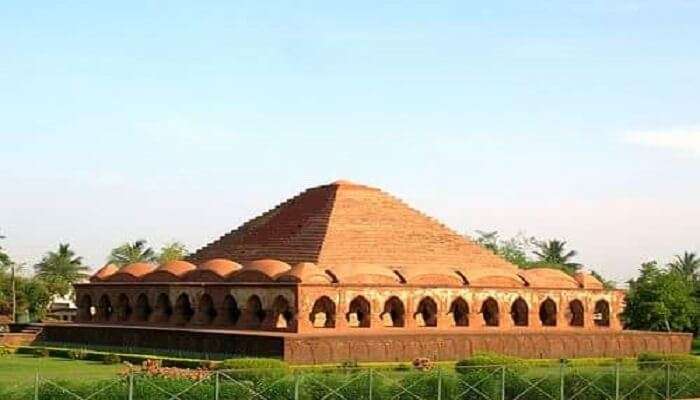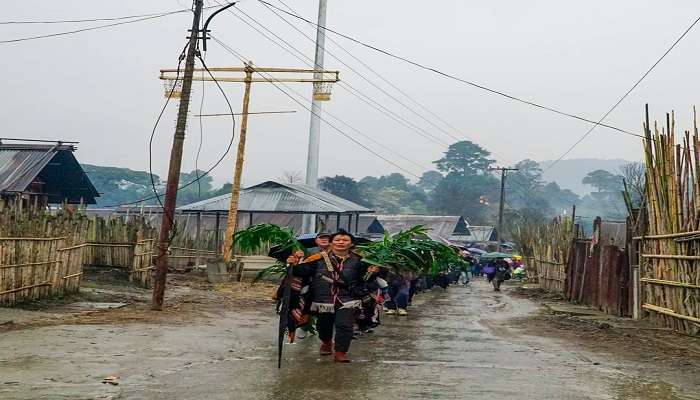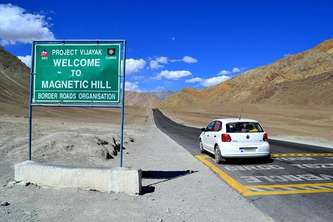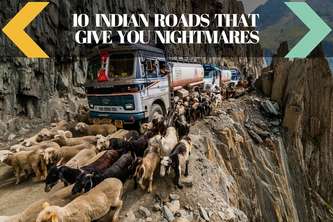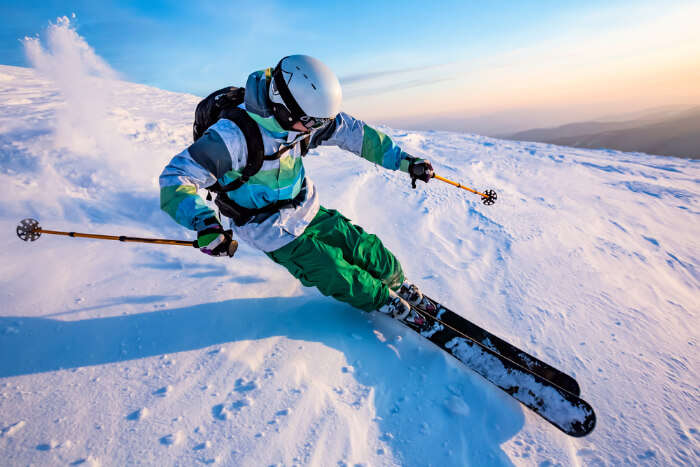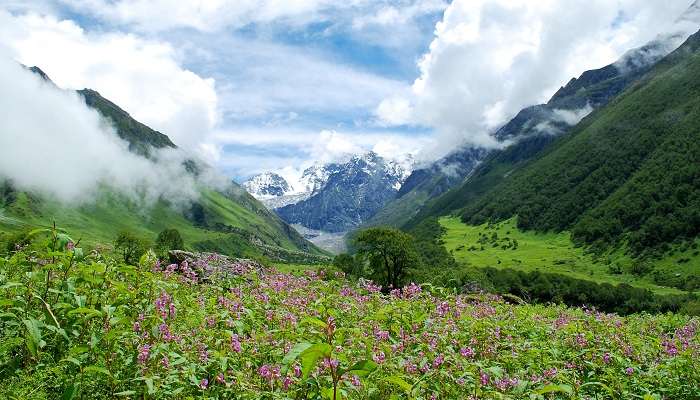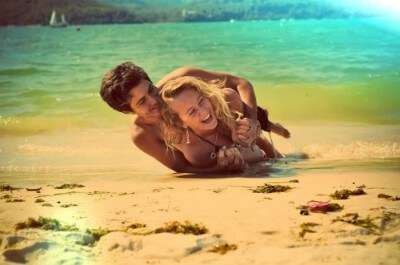Dolyatra 2025 | How & Where to Celebrate
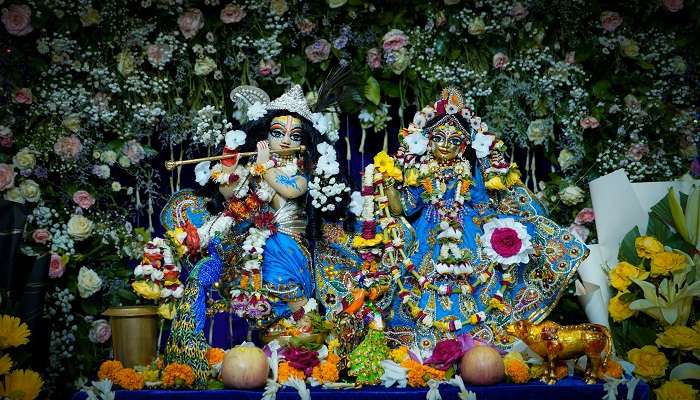
Dolyatra is celebrated with much pomp and show in many states across India, honouring the love of the divine couple Radha and Krishna. It is observed on the same day as Holi, the full moon day of the Phalguna month in the Hindu calendar. Celebrations for Dol Yatra also include a play of colours like Holi. However, the two festivals are not the same. Scroll down to read about this unique festival and all its customs, traditions, and best places to celebrate. Subho Dol Yatra!
Origin of Dolyatra
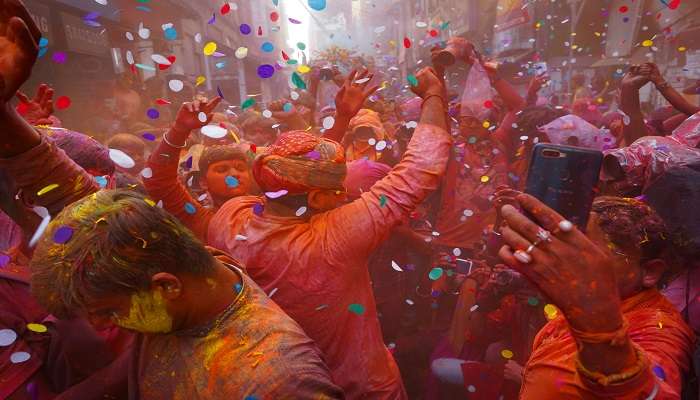
While the rest of the country celebrates the festival of colours, Holi, West Bengal is busy decorating its idols and carrying out a procession in honour of Sri Krishna and Sri Radha. Dol Yatra is the last festival in the Bengali calendar, and it also marks the beginning of a new year with the start of the spring season.
India celebrates many spring festivals like Cherta Festival, Ladainha Festival, and Baisakhi, but Dol Yatra falls on the same day as Holi, making it an even more special day. While Holi also honours the arrival of Spring, its roots lie in the myth of the Prahlad, a devout follower of Vishnu, and the demoness Holika, Dolyatra festival celebrates the day when Lord Krishna expressed his undying love to Radha.
Also Read: Famous Festivals Of India
History Of Dol Yatra
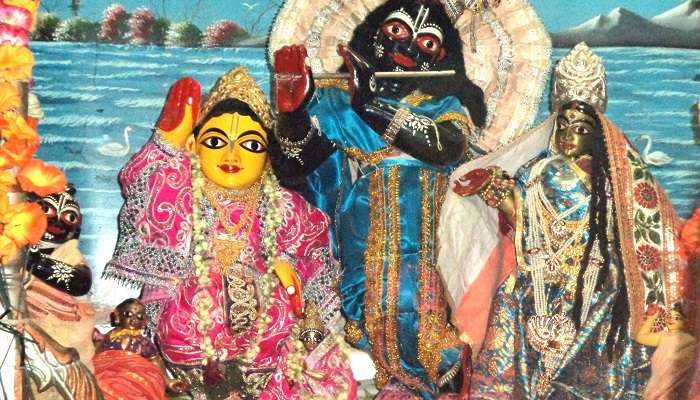
Dol Yatra, or Dol Jatra Festival, is also known as Dolotsava and Deul. In Odisha and Assam, the festival is known as Dol Purnima. Dolyatra is a Hindu swing festival. Now, let’s learn about Dolyatra meaning. The word Dola or Doli means a swing, and Yatra means a procession or a journey. The idols of Krishna and Radha are taken out of temples and paraded around the town on swing-like carriages. The name also refers to the practice of swinging the deities’ idols on swings. The festival is mentioned in many ancient Hindu scriptures and texts, including the Shri Garga Samhita.
When is Dolyatra Celebrated?
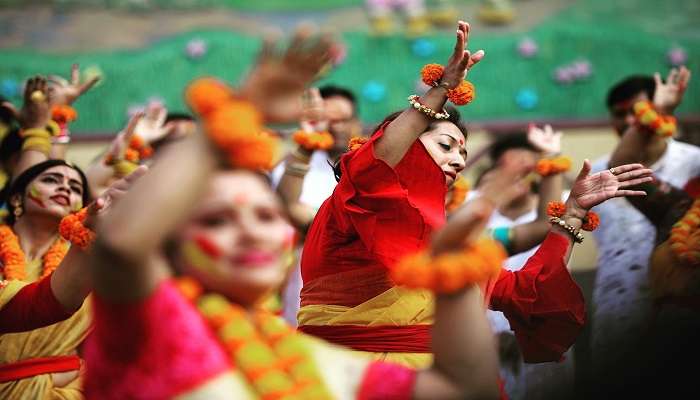
In 2025, Dolyatra dates will be on 14 March. In the Hindu calendar, Dolyatra falls on the last full moon day, the same day as Holi. In the Gregorian calendar, the festival generally falls in March but sometimes at the end of February. It is celebrated over four days, with preparations beginning on the day before Purnima and ending a couple of days after the main day of celebration.
Dolyatra 2025 aims to celebrate love above all. The divine love between Radha and Krishna sets an excellent example for marital couples to follow. True-hearted devotion to one’s partner forms the basis for the festival. After being adorned with flowers, colours, and jewellery, the idols of Krishna and Radha are placed on palanquins and chariots and swung from one end to another as a gesture of tenderness and devotion.
As Radha and Krishna go around the village, their steadfast love blesses all. Women sing devotional hymns, and men sprinkle colour and gulal on the idols. In Vaishnavism, the festival is of even greater importance. This is the same day when Chaitanya Mahaprabhu, a saint believed to be a combined avatar of Radha and Krishna, was born. Dol Jatra 2025 is going to be a truly auspicious occasion for Hindus.
Related Post: Festivals In March
How Is Dolyatra Celebrated?
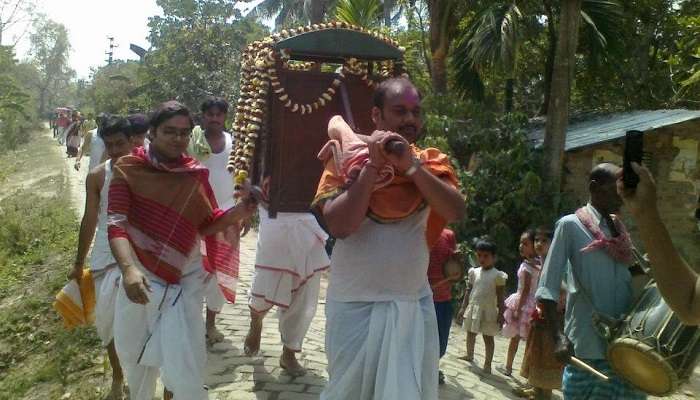
To celebrate this special occasion, milk sweets are prepared. Other dairy products, such as freshly churned butter, buttermilk, ghee, cream, and prasad, like Panchamrit, are also made and distributed among families and neighbours.
The first day of Dol Yatra is called ‘Gondh’ and falls on the fourteenth day of the Falguna month, a day before Dol. On this day, a ritual bonfire is made before the temple. The idol of Krishna is carried around the bonfire, and devotees chant praises and hymns.
The second is called Dol or Bhor-Deul. Like Holi, coloured powders are integral to the celebrations on this day. Known as Phag in West Bengal, Phaku in Assam, and Abir in Odisha, the coloured powder is not just used to adorn the gods. It is also used to decorate the pictures of deceased relatives, applied to the feet of elders and guardians as a mark of respect, and jestingly smeared on the faces and bodies of friends, lovers, siblings, and cousins.
The celebrations and colour-play continue on the third day, and the festival concludes on the fourth day, also called Sueri. This day marks when Krishna returns home after visiting his wife Ghunucha’s village. Another procession is carried out to celebrate the Lord’s return, and sweets and hugs are exchanged.
Places To Celebrate Dolyatra In India
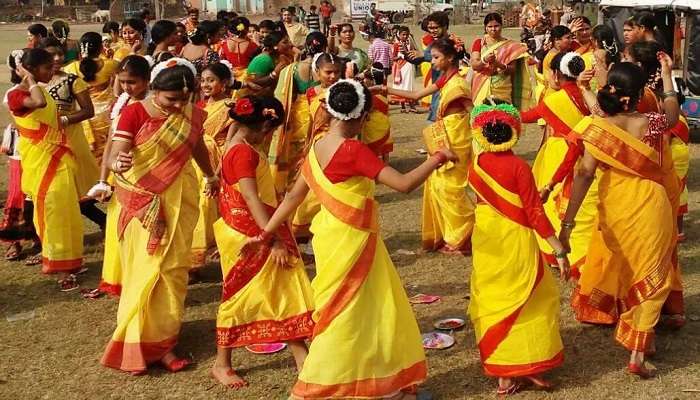
Dol Purnima is primarily a Bengali regional festival celebrated with local flavours and rituals. It’s no surprise when your Bengali friends wish you a Suvo Doljatra 2025 (‘happy Dol Jatra’) on the day of Holi. To see Dolyatra celebrated in full swing, you must visit Purulia, Shanti Niketan, or Kolkata in West Bengal.
- Purulia hosts one of the most unique Dolyatra celebrations. Folk dances such as Chau and Darbari Jhumur are performed to the harmonies of Baul musicians. The deities themselves are imagined to be playing with colours in a ritual called Deb Dol, after which only the play among everyone else begins.
- Shanti Niketan, the university founded by Nobel Laureate Rabindranath Tagore, celebrates the spring festival or Basantotsav on the day of Doljatra. Although the festival in the schools of Shanti Niketan is void of religious associations, the cultural performances and processions are worth the visit.
- The festival takes on a metropolitan turn in the city of Kolkata. Here, you can not differentiate between the rituals associated with Holi and those associated with Dolyatra. Hundreds of Doljatra processions are taken out in the neighbourhoods of Kolkata. The atmosphere is joyous and ecstatic. The city is dipped in every colour of the rainbow, and every taste bud enjoys the flavours of milk sweets.
You May Also Like To Read: Places To Celebrate Holi In India
Dolyatra is a vibrant, joyous occasion that celebrates the love between Radha and Krishna. Plan a trip to West Bengal and celebrate this auspicious occasion like the locals do. Play with colours, taste a hundred sweets, and wish everyone a Suvo Dol Jatra.
For our editorial codes of conduct and copyright disclaimer, please click here.
Cover Image Source: Pexels
Frequently Asked Questions About Dolyatra
What is the meaning of Dol Yatra?
Dol Yatra is a combination of words derived from Sanskrit, which means Swing and Procession, respectively. Dolyatra meaning, therefore, is a festival of swing procession.
What is the difference between Dol Yatra and Holi?
Even though the two festivals are celebrated on the same day and date, they are different occasions. The only similarity they share is that on both these festivals, people play with colour. Still, they are different in their origin, history, religious rituals, and locations.
Which state is the festival Dol Jatra celebrated in?
Doljatra is celebrated on a grand scale in West Bengal. The festival is also celebrated in Odisha and Assam, where it is known as Dol Purnima. Dol Yatra 2025 date is 14th March 2025.
Why is Dol Utsav celebrated?
Dol Utsav is a religious festival that celebrates the love and union of Sri Radha and Sri Krishna. Further, it is also the birth date of the Hindu saint Chaitanya Mahaprabhu, a combined avatar of Radhakrishna.
What are the other names of Dolyatra?
Dolyatra, composed of two words - Dol and Yatra, meaning swing and procession respectively, is also known by the names Dolo Jatra (a different stylisation), Doul Utsav (the festival of Doul), and Dol Purnima (since it's celebrated on the full moon day).
How many days are there in Dola Purnima?
Dol Purnima goes on for a duration of four days, starting on the 14th day of Falgun month. On Purnima (the 15th day), the main celebration takes place, which continues for two more days. Dol Purnima 2025 will be celebrated from 13th March to 16th March 2025.
Which day is Dol Yatra in 2025?
Dolyatra 2025 date is scheduled on the 14th of March, 2025, on the same day as Holi.
People Also Read:
Chhath Puja Taj Mahotsav Holika Dahan
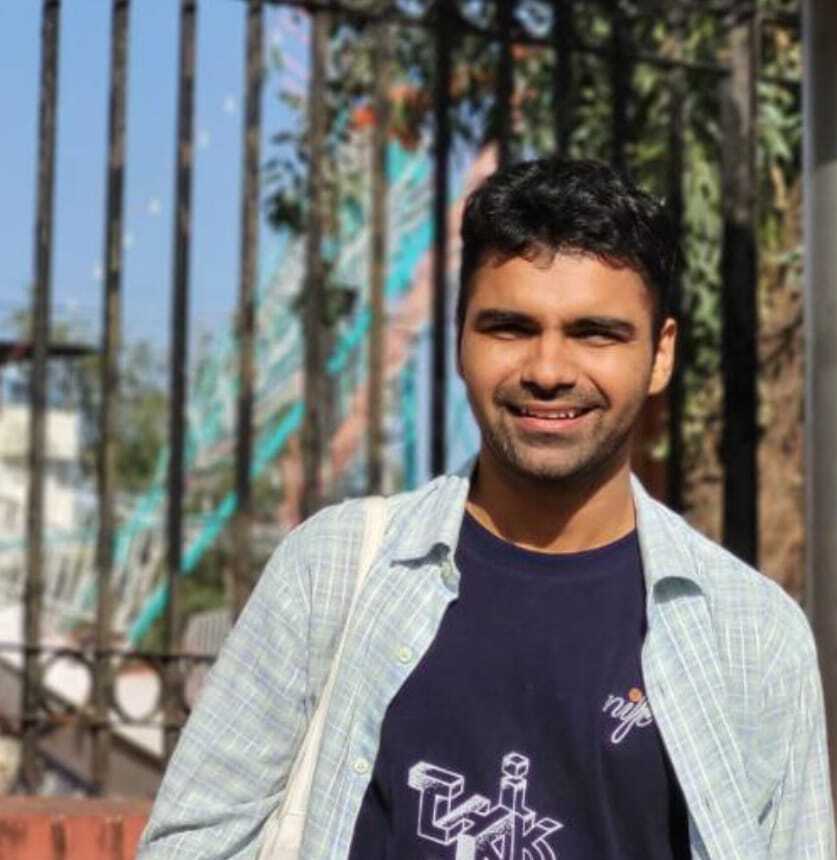
Abhay Kumar is a graduate of English Literature. Writing is both his hobby and his passion. He writes academic research articles as well as poetry and short fiction. He loves reading science fiction, fantasy, literary fiction, and translated fiction. He also loves traveling and writing about himself in the third person.



